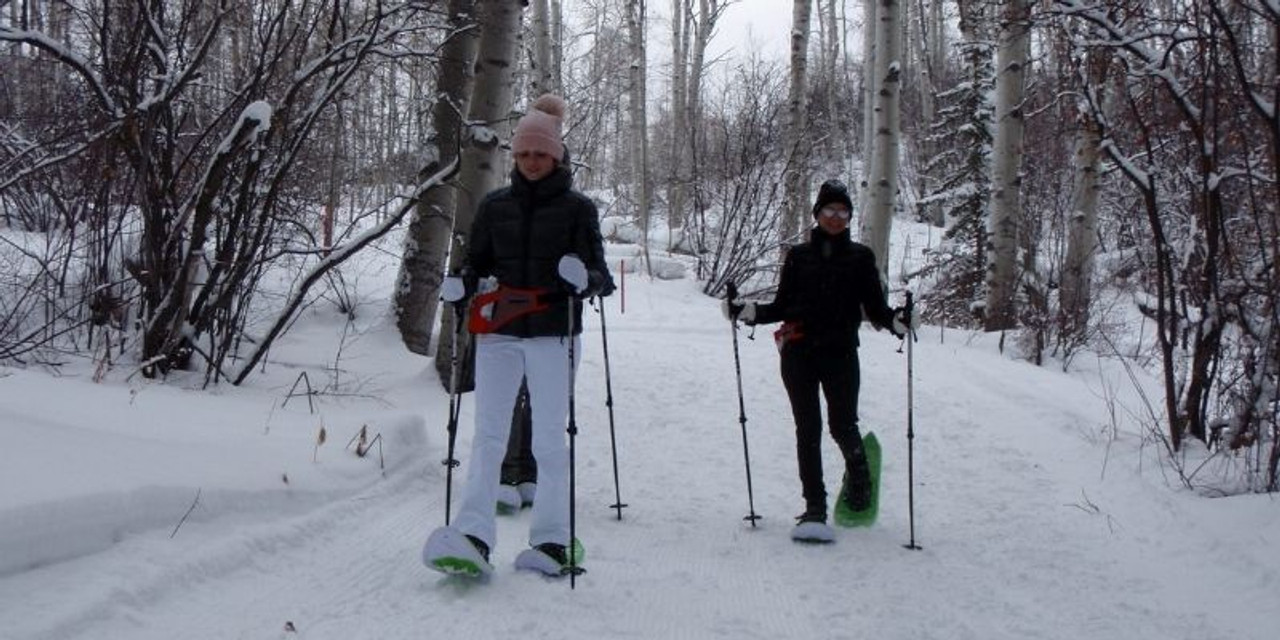How Do You Snowshoe for Beginners
Posted by Crescent Moon on Jan 24th 2020
There are a number of reasons to go snowshoeing. It’s a great winter exercise, it’s a great social activity, and it's affordably priced winter activity. With a little bit of research, you will find that getting started takes very little that you don't already likely own. You need some basics in order to go snowshoeing. You need to get the right snowshoes for your weight, the snow conditions, and the terrain. You want to wear warm and waterproof boots. You should dress in layers with clothing that can handle both wet and cold conditions. Bring adjustable hiking poles with snow baskets.
Dressing for Snowshoeing
Snowshoes fit to any type of shoe or boot so your concern should be to wear a shoe that is warm, dry, and comfortable. Waterproof winter boots with leather or rubber uppers are ideal but a sturdy hiking boot can also work. You can also get snowshoe booties to help protect your feet. Dress in layers and avoid cotton since it can get wet and make you colder. A base layer of wool or silk is a great choice for wicking moisture and helping keep you comfortable.
Basic Techniques for Snowshoeing
Depending on your terrain, there are some basic techniques to make the whole process easier.
Flat Terrain Snowshoeing:
When you walk on flat terrain, the snowshoe process is fairly intuitive. The stride should be wider than it is for hiking to avoid stepping on the inside of your frames. You may find your groin or hip muscles ache after a bit if it’s your first time on snowshoes.
Snowshoe Uphill:
As you go uphill, you use your instep or toe for tracking. Be sure to place feet firmly on snow with your poles in front of you. In powdery snow, you want to use a kick step technique. This is where you pick up the foot and kick into the snow with the toe of your boot, in order to create a step. It takes more than one try to build a surface solid enough to stand on. On hard pack snow, you won’t be able to use this method. Instead, you rely on traction from your snowshoe cleats or poles to walk. On a steep or moderate slope, you should flip up the heel lift to put your foot in a neutral position to make it easier to move uphill.
Snowshoe Downhill:
When you are descending on snowshoes, you want to keep the poles planted in front of you, along with the knees bent and relaxed. Keep your body weight back slightly. Plant your heel first when you walk. Poles can help give you additional balance as you descend. You want to avoid over-swinging the leg since this can cause the back of your snowshoe to catch and make you unbalanced.
Snowshoe Traversing:
When you are traversing on snowshoes, you need to be careful to keep your balance. Push the uphill side of each snowshoe into the slope. Keep your weight on the uphill snowshoe.
Using Hiking Poles to Snowshoe:
Hiking poles may be optional but can come in handy. Hiking poles can help you have better balance while you snowshoe and also give you an upper body workout. Adjustable hiking poles are the best option since they can be shortened for traveling uphill and lengthened to descend. In order to set your hiking pole for any flat terrain, flip the pole upside down and grab the pole under the basket. Adjust the length so your elbow is at a right angle.
What To Do if You Fall While on Snowshoes
It may not happen often but you may fall at some point. If you can feel yourself start to lose balance, fall toward the upside if possible. Before you get back up, slip your hands out of pole straps, if you have them, and shift around until the head is uphill, the feet are straight downhill, and you face the slope with knees pulled close to your chest. The goal is to press off the slope until you are on your knees and then you can stand all the way up on your snowshoes.
Snowshoe Safety Tips
When you are just starting out, it’s best to use established snowshoe trails. Using resort trails helps to keep you closer to potential help. It’s best to avoid going alone whenever possible. Check your snowshoe gear and always be prepared with the right clothing, water and food. Be aware of your surroundings. Backcountry snowshoe trails come with hazards, such as falling into a creek, the threat of avalanches, and being surprised by changing weather. Stay hydrated while you snowshoe, water keeps your muscles functioning properly and helps your body fight off hypothermia.
If you follow these snowshoe tips you will get a great workout and have a safer snowshoe outing.
